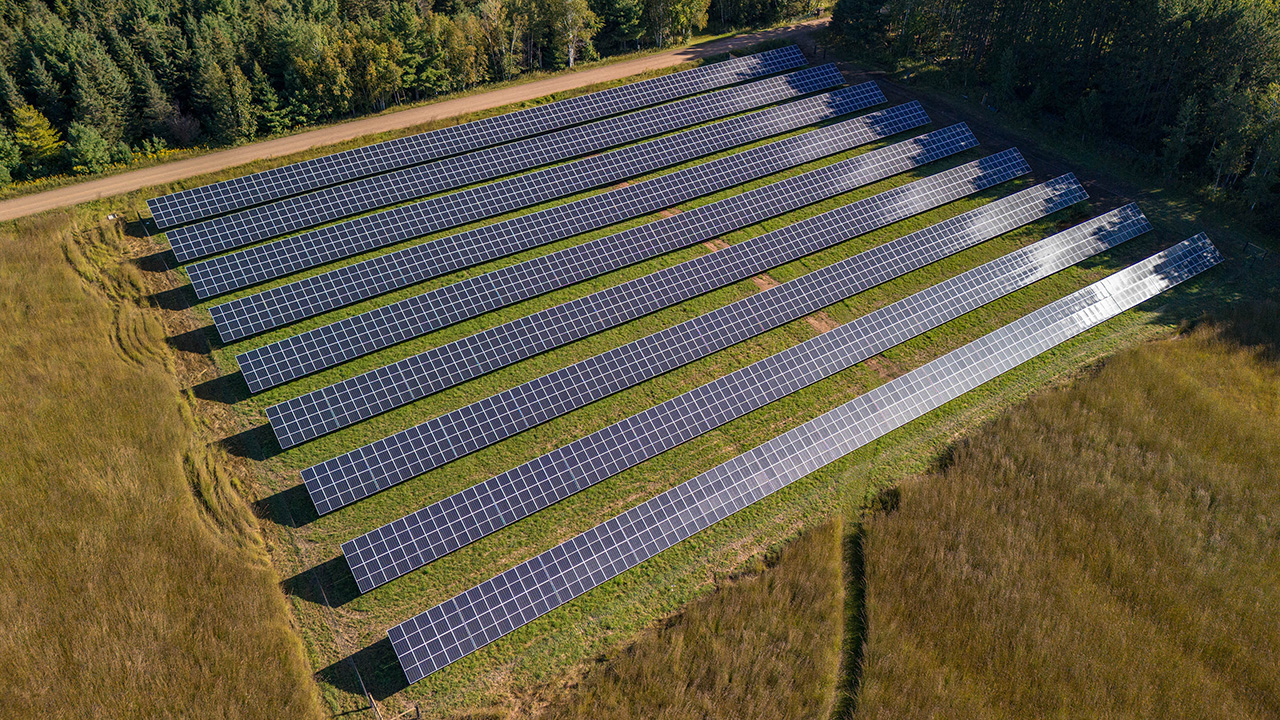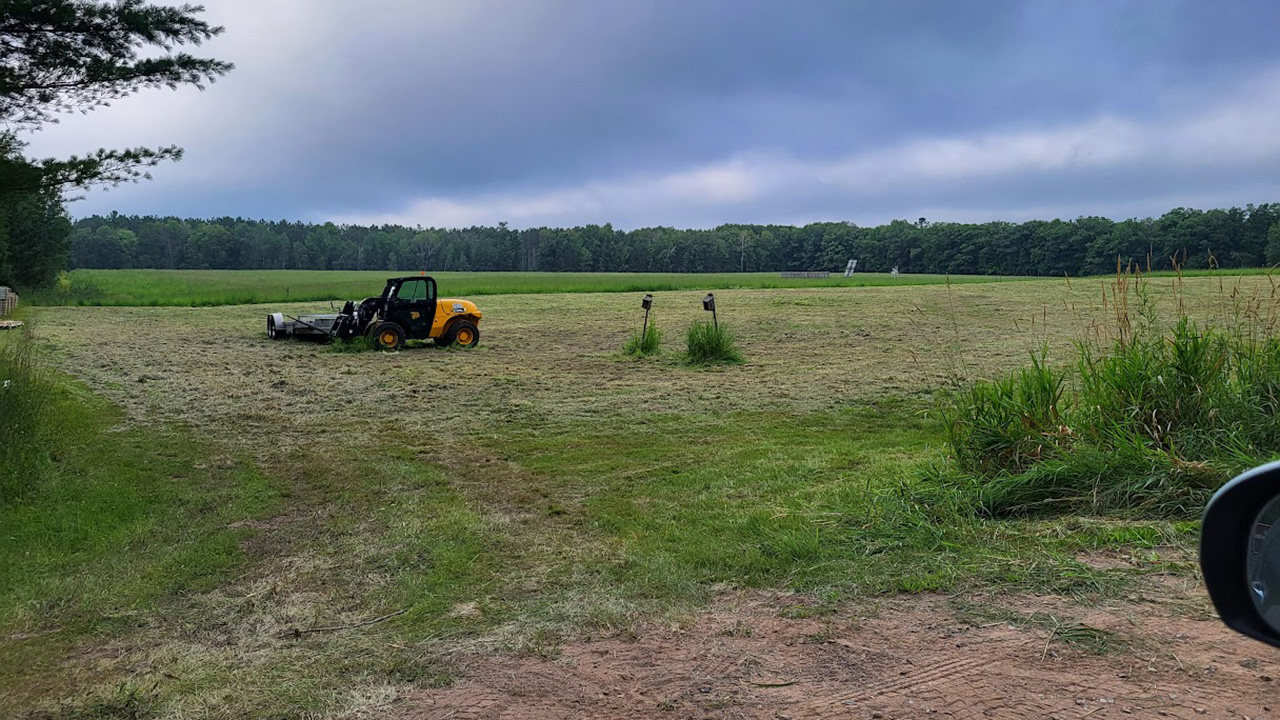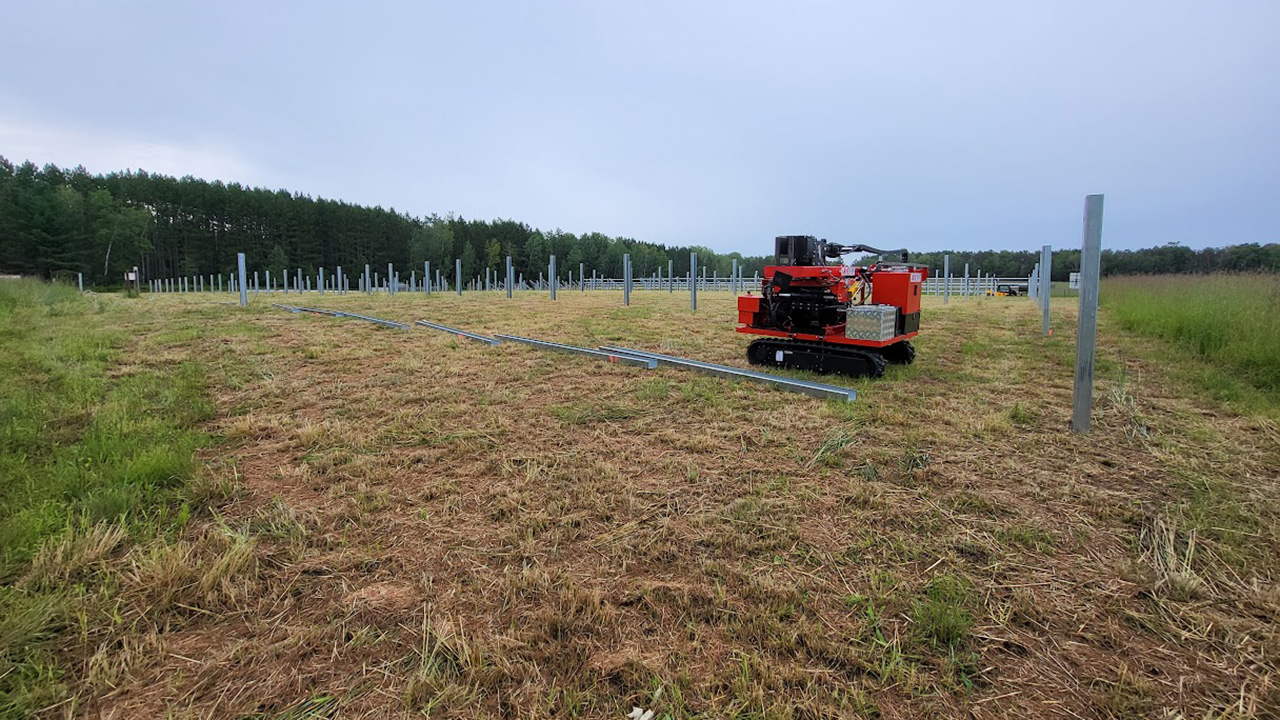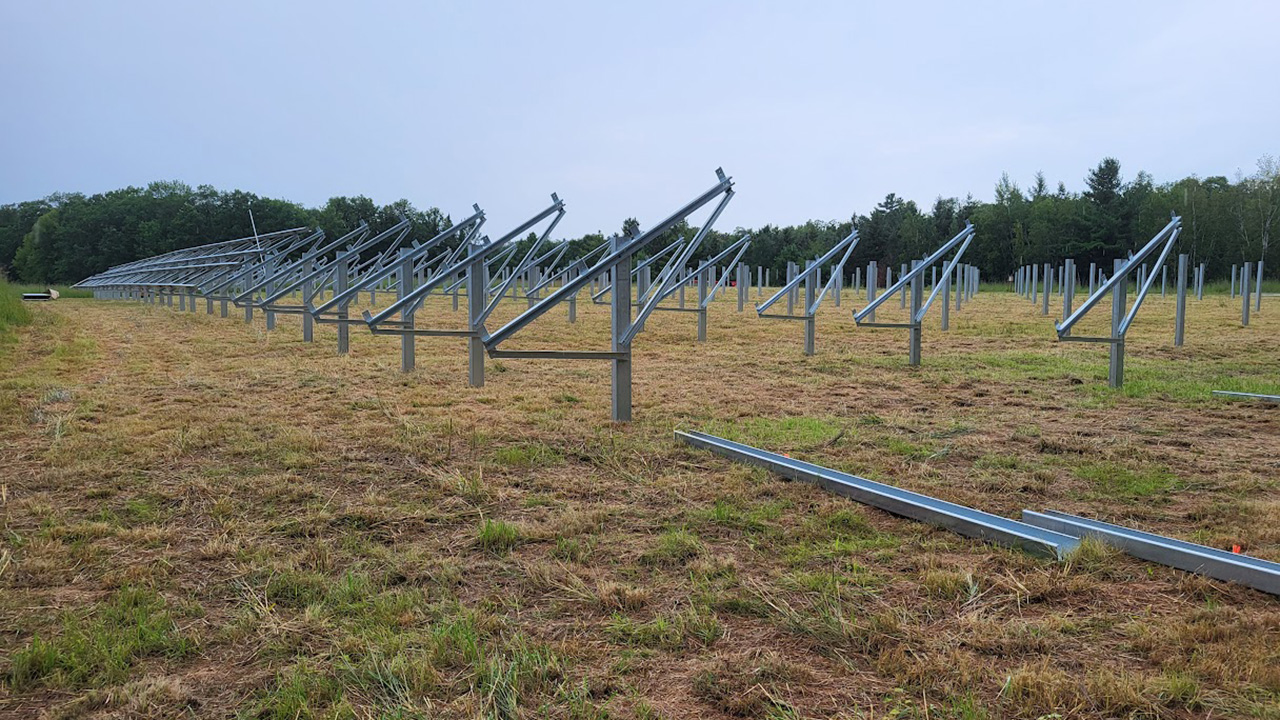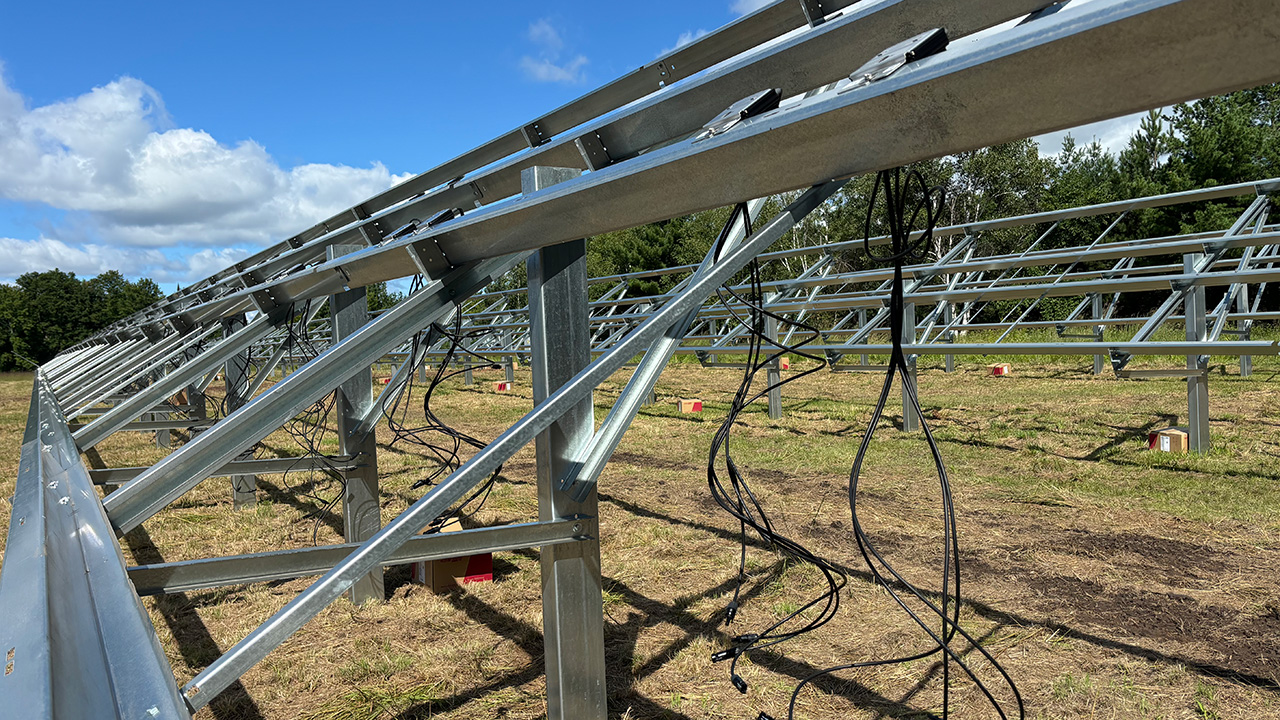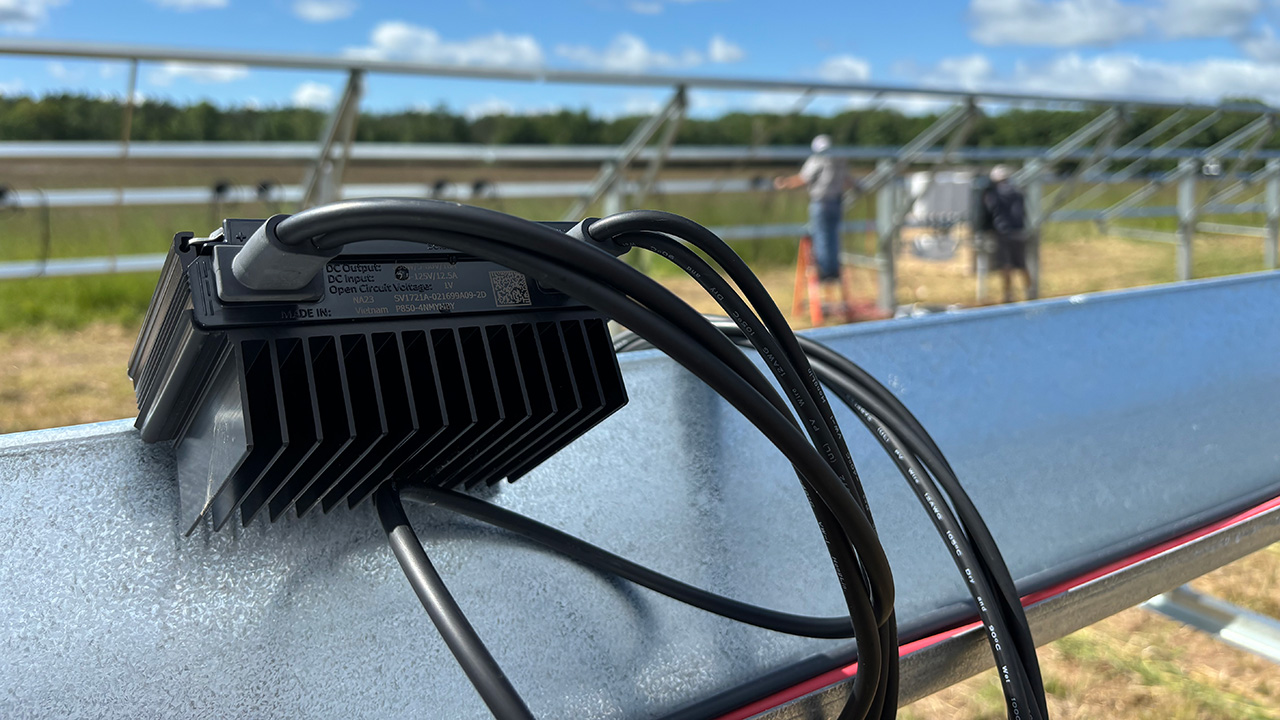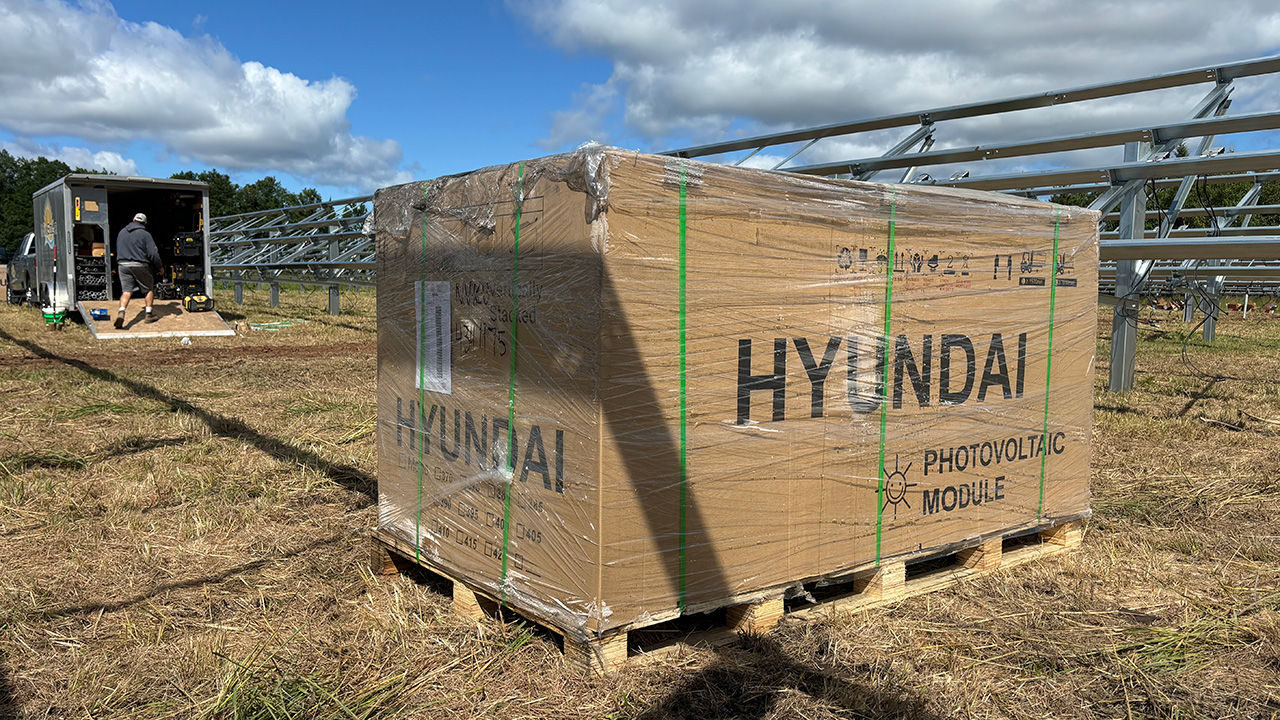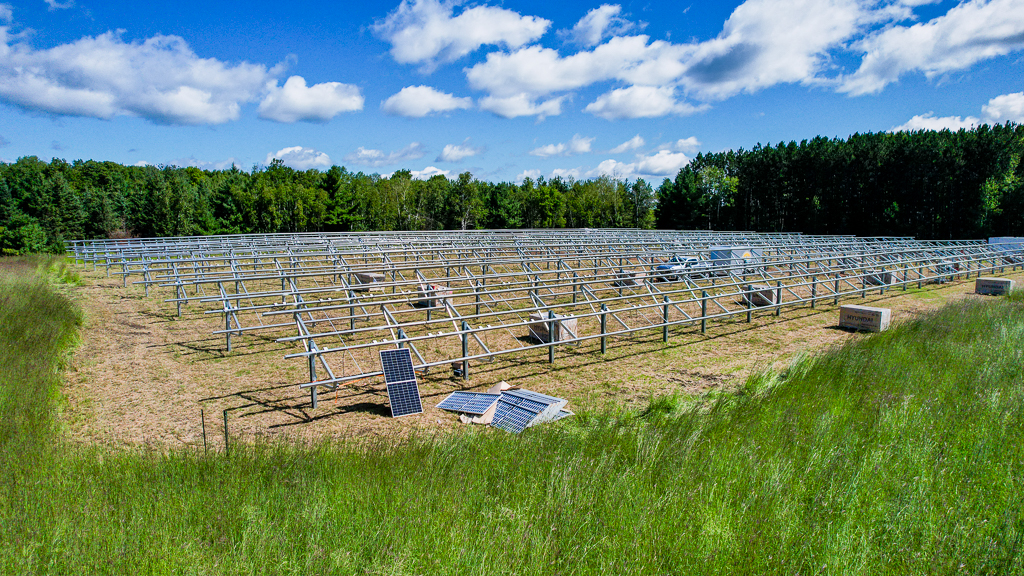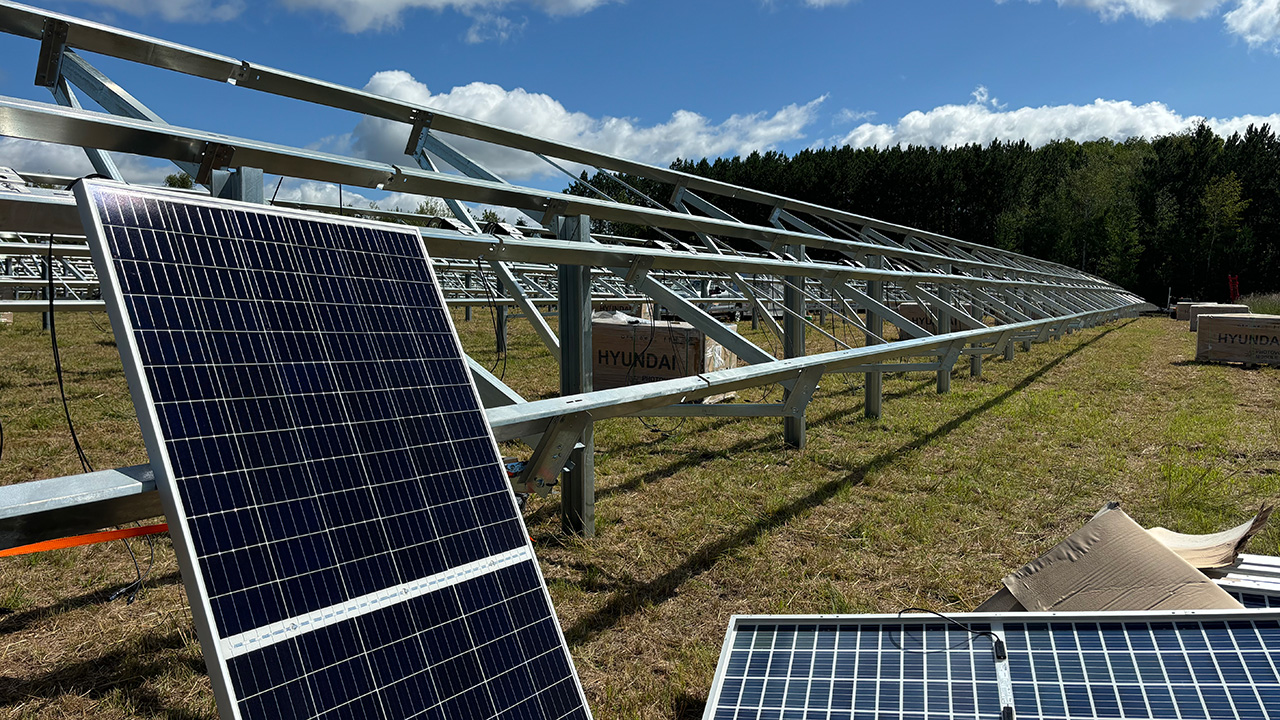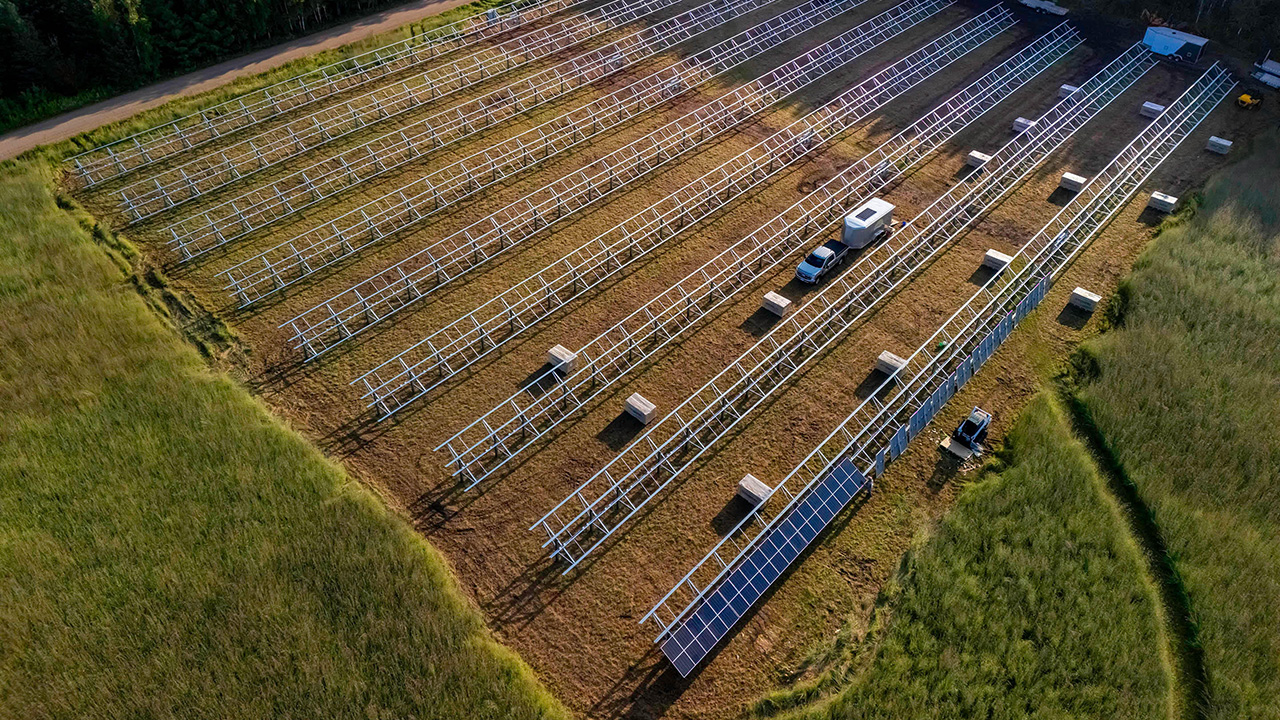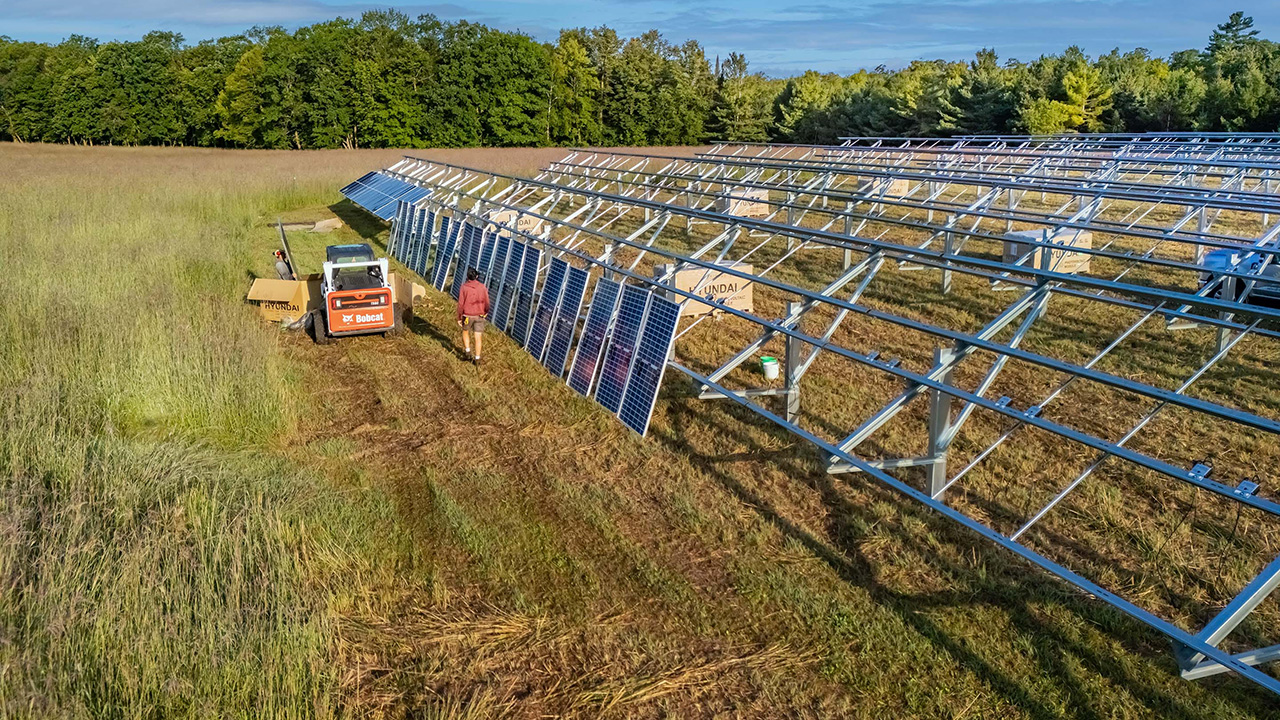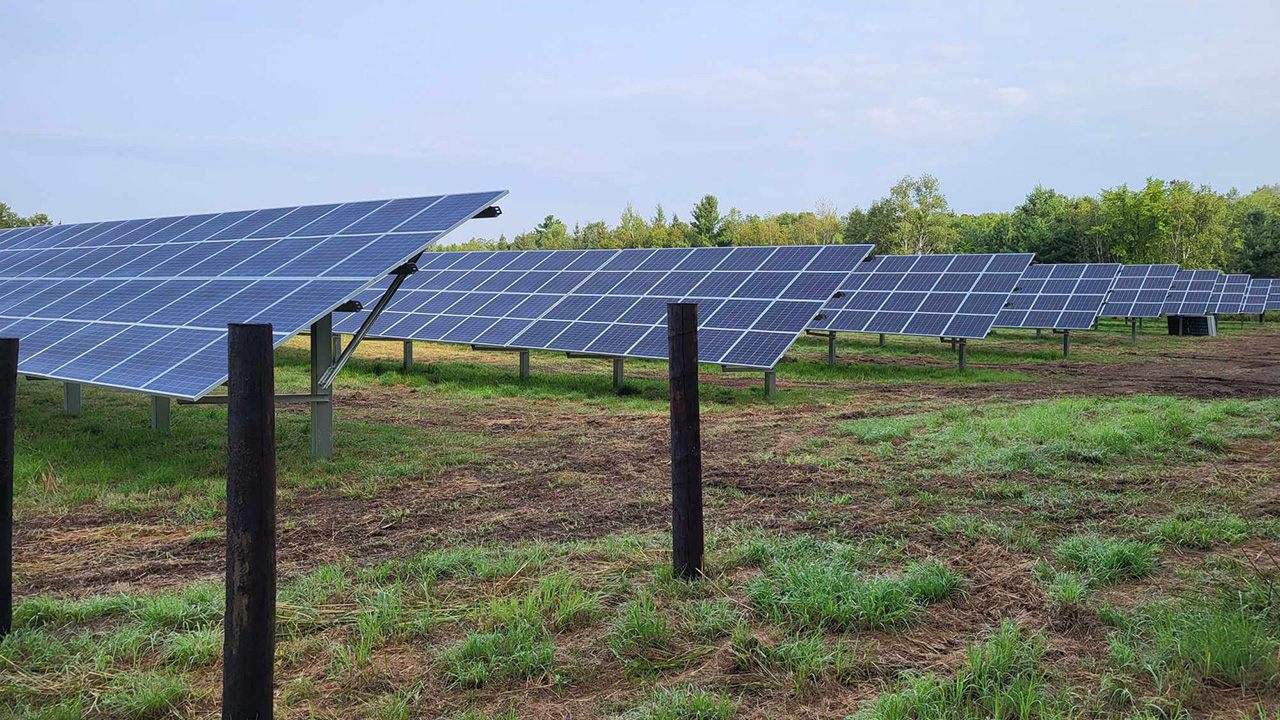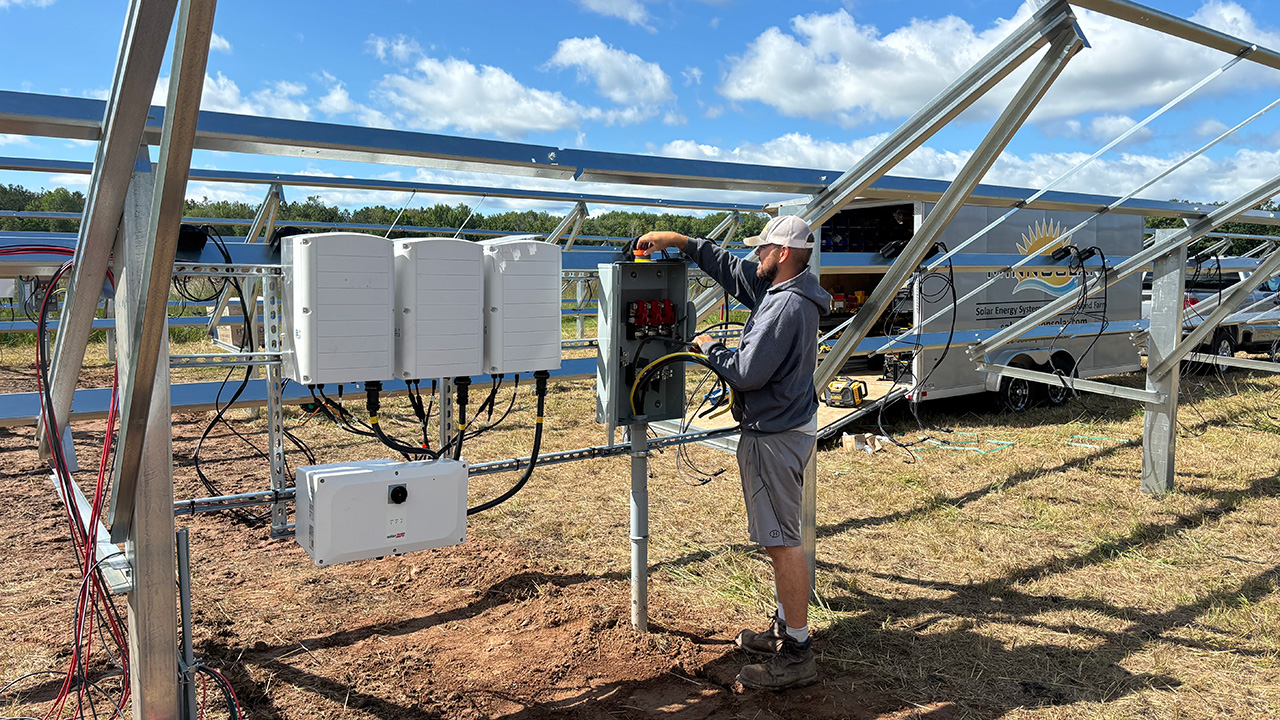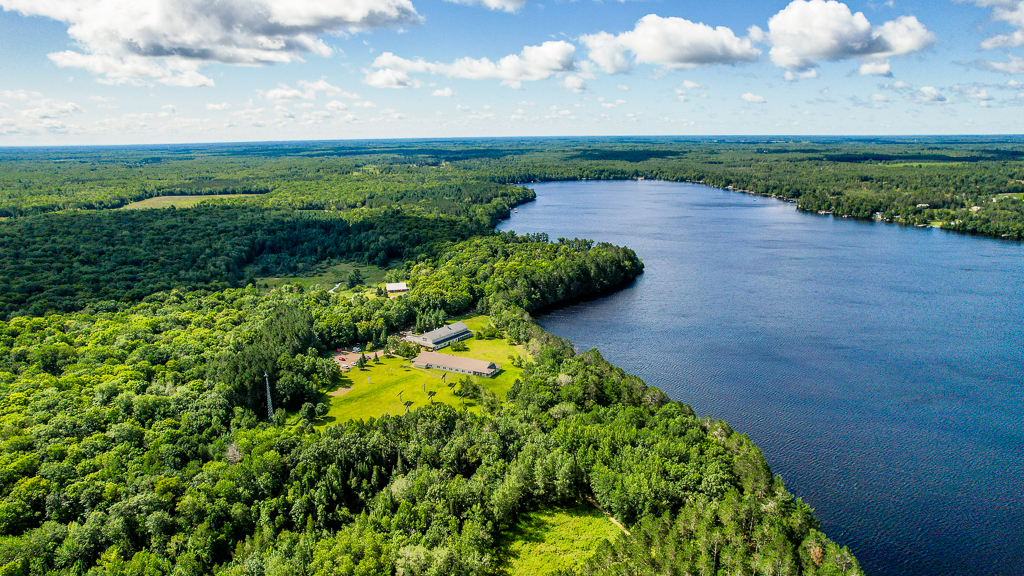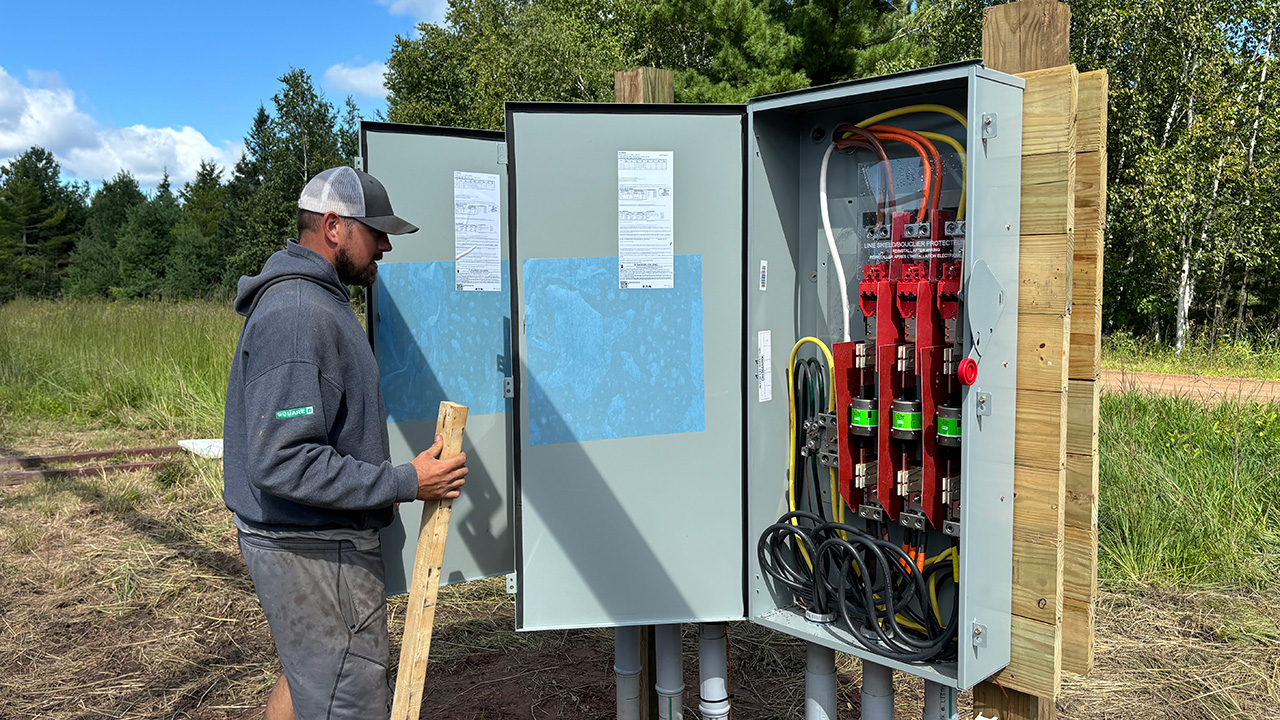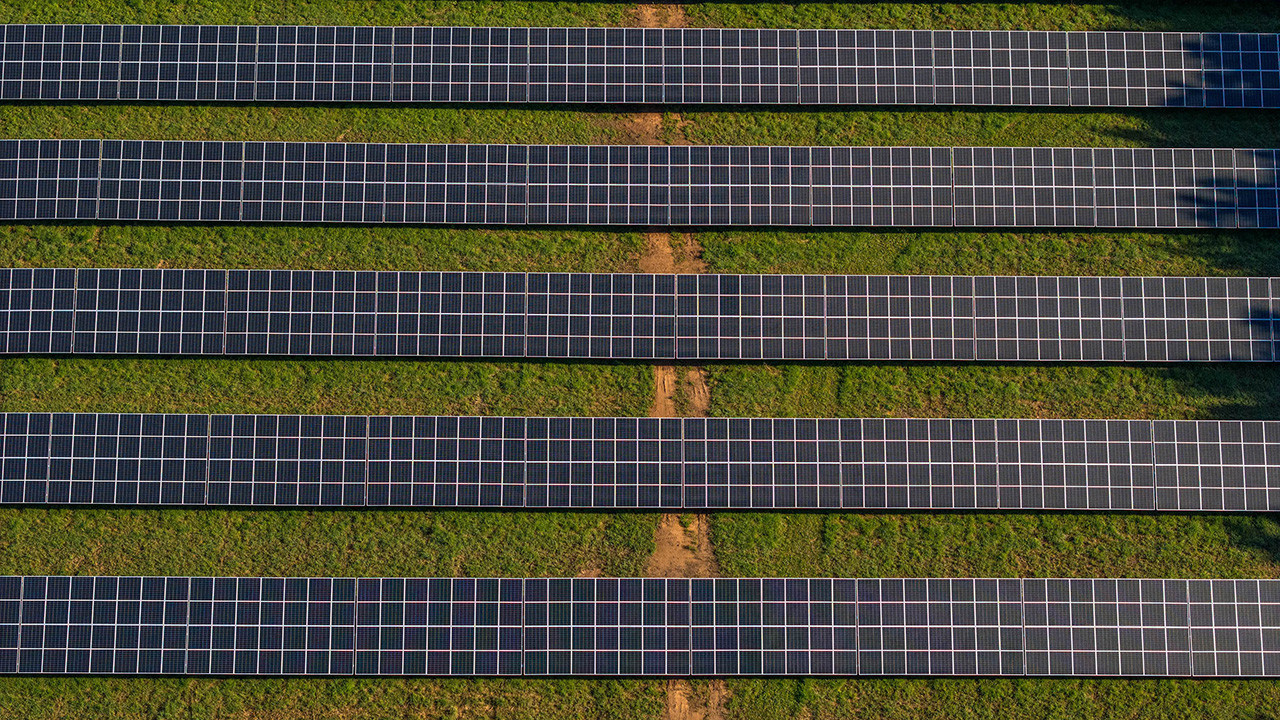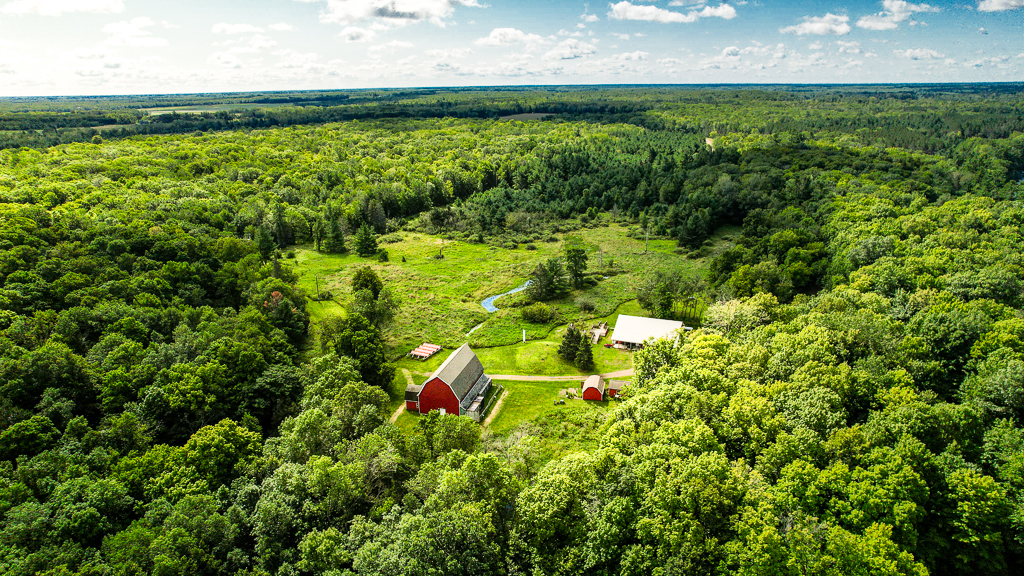
Osprey Wilds Environmental Learning Center (formerly Audubon Center of the North Woods) in Sandstone, Minnesota, has long been a leader in sustainability and ecological education. And starting this fall, it will take a major step forward in its commitment to sustainability by powering its campus with 100% clean, local electricity. The installation of a 716-kilowatt solar farm will meet all of the organization’s current and future electricity needs, allowing it to continue its mission while dramatically reducing its greenhouse gas emissions for itself and the surrounding community.
Bringing the solar project to life, however, was far from simple. After over five years of planning and overcoming obstacles, Executive Director Bryan Wood led the charge to turn his vision of a solar-powered campus into a reality.
This post outlines Osprey Wilds’ journey to building a first-of-its-kind environmental learning center powered by on-site solar, the challenges they faced along the way, and how their collaboration with partners was the key to turning an ambitious idea into a long-term success story for the community and our climate.
Osprey Wilds’ solar journey: from vision to reality
Osprey Wilds has long been implementing a range of sustainability measures across its campus to lower its greenhouse gas emissions and exemplify its sustainability principles. For more than 20 years, it has utilized a geothermal heat pump for carbon-free heating and cooling for its two main buildings, along with using solar thermal panels for hot water and distributed solar and wind to cover some of its electricity needs. But Bryan Wood saw an opportunity to do more: to build a solar farm capable of powering the entire campus – and then some – with clean energy.
The goal was clear: install enough solar capacity on the Osprey Wilds campus to not only meet its current electricity demand with carbon-free, local power, but to also prepare for future growth as Osprey Wilds transitions its campus to run entirely on electricity, including appliances and heating systems that currently rely on propane. The vision of generating three times the center’s current energy needs became the foundation for the new solar project, which will soon power Osprey Wilds and its surrounding neighbors with clean, local energy.
“As executive director, I’m constantly asking myself how Osprey Wilds can best model our sustainability principles,” said Bryan. “It became increasingly clear that we should be doing as much as possible to transition to clean energy and reduce our carbon footprint.”
Bryan identified a stretch of tallgrass prairie along the driveway to the property as the ideal location for the solar field. In addition to generating electricity, the land could be used to cultivate pollinator-friendly habitat, which could be used to demonstrate sustainable agriculture practices like sheep grazing, along with a new learning opportunity for students and visitors alike. Bryan got to work learning everything he could about financing, planning, and building a small-scale solar project, but it didn’t take long to realize it would take a lot of work.
Navigating challenges: the five-year path to Osprey Wilds’ solar field
While the concept of a local solar field was straightforward, the road to implementation was long and filled with challenges. As a nonprofit organization, Osprey Wilds has to balance its sustainability goals with financial realities. Securing funding, navigating regulations, and working with various stakeholders all presented significant challenges.
In 2019, Bryan connected with the president and CEO of his local electricity co-operative, Justin Jahnz of East Central Energy. At that time, Osprey Wilds was looking to finance a 248 kW solar project that would meet its current electricity needs. Ultimately, the project didn’t work for Osprey Wilds’ and East Central Energy’s goals. Then the pandemic hit. In 2022, Bryan rekindled discussions with Justin about how Osprey Wilds could get a solar project done with East Central Energy. As the two discussed how to make the project a reality, Justin passed along best practices based off a prior solar field he helped complete with the Grand Casino Hinckley. Justin shared that for electric cooperatives, it’s far easier to make projects a reality when they are larger due to economies of scale, noting that funding for a solar project of this size would likely be easier than smaller, distributed solar projects.
Bryan’s next step was supporting East Central Energy to open a Request for Proposal (RFP) process to receive bids from solar installers and coalesce around the project’s cost. The responses from this RFP process connected Bryan with Shawn Markham, CEO of Soltek LLC, who became a critical partner in moving the project forward.
Together, Bryan, Shawn, and Justin began collaborating on the existing infrastructure of the local electric grid, the financial costs of the project, and the regulations that the project had to meet. To make financial sense, every party involved had to mutually benefit from the project, and the solar field would have to generate electricity that was at cost or cheaper than the power ECE currently provided.
A grant secured through the U.S. Department of Agriculture’s Rural Energy for America Program (REAP) funded by the Inflation Reduction Act, helped to offset project costs, but it still wasn’t quite cost-competitive with the solar market’s costs ever-shifting realities during the COVID-19 pandemic.
Shawn and Bryan spent the next year attempting to overcome cost challenges, until one day the economic stars aligned, and Shawn identified an inventory of discounted solar components from a recently bankrupt solar company. The safe-harbored solar panels and components would allow the project to not only become financially feasible but provide Osprey Wilds and the surrounding community with cheaper, cleaner electricity.
With this breakthrough, Bryan and Shawn were able to meet the threshold needed to make it competitive with ECE’s existing electricity rates. After years of negotiation and planning, Osprey Wilds, Soltek, and ECE finalized a Power Purchase Agreement and locked-in affordable, clean energy for Osprey Wilds and its surrounding neighbors for the next 30 years at a cheaper cost than before.
Collaborative partnerships are the key to success
Osprey Wilds’ solar installation offers valuable insights for other organizations looking to reduce their greenhouse gas emissions through renewable energy. Bryan’s first takeaway was the importance of building strong partnerships. “This was a collaborative, mutually beneficial process for all three of us, as a nonprofit, solar installer, and electric cooperative,” said Bryan. “When you collaborate with others, great things can happen. A rising tide lifts all boats.”
Another lesson is the need for patience and persistence while planning a renewable energy project. “There were several times I thought the project wouldn’t come to fruition,” says Bryan. “But by sticking at it and navigating new ways to overcome challenges, it slowly became a reality, and the result is something better than what I initially hoped we’d achieve. I really am grateful to Shawn for his persistence. Without him scouring the country to locate more affordable materials, and applying for and receiving the REAP grant, that project simply wouldn’t have happened.”
While it only took three weeks to physically install the solar panels on Osprey Wilds’ campus, it took five years of planning to get there, due in part to the complexity of navigating grants, technical assistance, regulatory hurdles, and sourcing cost-competitive supplies. These challenges aren’t unique to Osprey Wilds and underscore the need for systemic changes that could make the process more accessible, such as expanded federal climate financing or technical assistance programs to speed installation.
Despite these challenges, the outcome is a major success for Osprey Wilds. The solar farm, scheduled to go live in October 2024, will provide reliable, zero-carbon electricity to power the organization’s operations for decades to come. In addition to the financial savings and reduced emissions, the solar field will serve as an educational tool for the thousands of students and visitors who visit Osprey Wilds each year, showcasing the benefits of renewable energy and sustainable land use.
A model for our future
As the largest solar installation of its kind for a nature center in Minnesota, and perhaps the United States, Osprey Wilds’ solar project serves as a case study for other environmental organizations aiming to transition to carbon-free energy. Yet, the process also underscores the challenges that nonprofits and similar organizations face when trying to implement distributed renewable energy projects.
“This solar farm is more than just panels and clean energy – it’s a testament to what can happen when passionate people come together with a shared vision,” said Bryan. “By working side by side with Justin at East Central Energy and Shawn at Soltek, we turned a bold idea into a lasting legacy for our community and the planet. It’s a reminder that collaboration can build a brighter, more sustainable future for everyone, and we can achieve more when we work together.”
Interested in hearing more about how this solar project became a reality? Join our webinar, Solar at Osprey Wilds: How a nonprofit, electric co-op, and solar developer teamed up for clean energy, to hear directly from Bryan Wood, Shawn Markham of Soltek, and Justin Jahnz of East Central Energy. The webinar will take place on October 28 at 12-1 p.m. Central, moderated by Fresh Energy’s Jo Olson and Isak Kvam.

